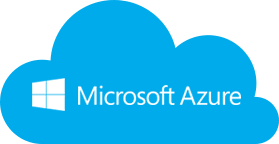The Most Important Factors Affecting WAN Administrators Today
Organizations are looking at how to reduce the costs of WAN management and WAN optimization. With the advent of Cloud based applications for a private, public or hybrid cloud, businesses are searching for the best solution to help not only implement these changes, but to manage them as well. Here are three of the most important factors affecting WAN administration today:
- Security: Without question, the most important factor affecting the implementation of any SD-WAN solution, is security. Our research revealed that security of applications hosted in the cloud and locally was paramount to IT administrators. But it is not only security of cloud based applications. Transmission across the WAN is equally important, especially for organizations with international operations.
- Ease of Management: This gives rise to the second most important factor affecting WAN administrators. Administrator skills required to manage the WAN. Organizations cited that the need to have highly skilled, and in some cases, vendor certified personnel to manage their WAN equipment was costing too much, especially with on-going maintenance of proprietary systems and solutions. More than 50% of respondents stated that they have difficulty in retaining IT expertise, especially in today’s job market. Solutions that keep it simple, easy to manage and cost effective are preferred.
- Compatibility with existing networks: Very few suppliers can claim to have a suite of offerings that can address the complex need to address security, ease of management of private and public cloud application needs and compatibility with existing networks. Rip and replace is not something WAN administrators want, or should do. There is growing need to upgrade, enhance and augment existing infrastructures, using the equipment and legacy systems to help implement a SD-WAN solution that is compatible with current networking technology and protocols such as BGP. EIGRP, and OSPF, and well as provide inbound and outbound load balancing and traffic control.
FatPipe offers its customers SD-WAN solutions with WAN Optimization and network optimization. These solutions are available as appliances, virtual machines (VMs) and instances in the Azure and AWS cloud.
FatPipe has always been a company serving network administrators. FatPipe was providing SD-WAN solutions long before SD-WAN became a buzz word. The solutions are built to work with existing LAN and WAN infrastructures and protocols. In fact, FatPipe is the only SD-WAN vendor to support up to 40Gbps bandwidth and up to 15 interfaces.
FatPipe Networks – www.fatpipeinc.com Call 801683-5656 x 1224




